Welcome to our complete guide on preparing for a hurricane. What you will find here are solid, no nonsense tips, tricks and practical instructions about how to ensure both yourself, your loved ones and your property is safe in the events of a storm.
Preparing Effectively for a Hurricane: A Comprehensive Guide
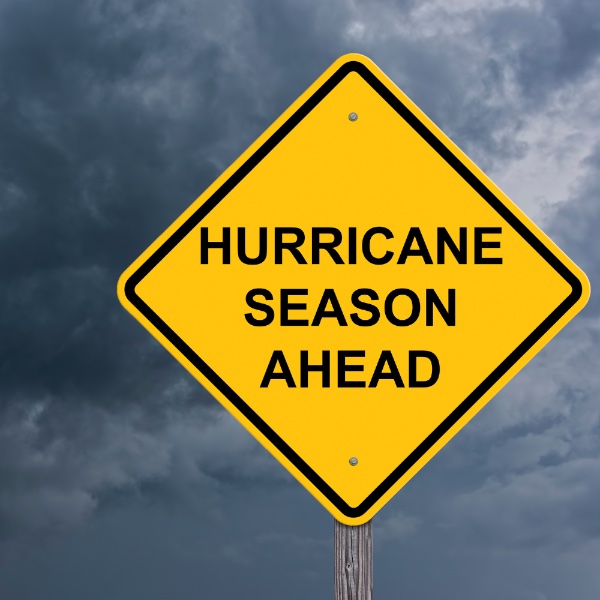
Hurricanes, formidable forces of nature, can unleash devastating impacts on both life and property. In the face of such a formidable adversary, being thoroughly prepared is not just a choice; it’s a necessity. In this extensive guide, we’ll delve into the art of effective hurricane preparedness, equipping you with the knowledge and strategies to navigate the turbulent waters of a hurricane. We’ll cover essential steps you should take before, during, and after the storm to ensure your safety and that of your loved ones.
Let us waste no further time and dive straight into this guide about preparing for a hurricane.
Before the Hurricane Strikes: Laying the Foundation for Resilience
The first thing to consider when preparing for a hurricane is what you can do before the storm hits. As with any emergency situation the more prepared you are the better chances you will have.
1. Develop a Robust Plan
The cornerstone of hurricane preparedness lies in meticulous planning. Your first line of defense begins by subscribing to local text and email alerts, serving as early warning systems for impending storms. Staying well-informed is paramount, and this can be further achieved by diligently monitoring local news and weather updates. Being aware of any developments on the horizon is your initial shield against the storm’s uncertainty.
2. Identify Safe Havens
In the event of a hurricane’s fury, having a clear understanding of nearby safe shelters is non-negotiable. Familiarize yourself with the locations of these havens, as they can be the sanctuary you desperately need when your home’s safety is compromised. Additionally, establish a designated meeting point for your family members, ensuring that you have a central rendezvous if circumstances lead to separation. Equally important, make sure everyone possesses a contact number for a trusted friend or family member—a lifeline in the event of communication disruption.
With the foundation laid for effective hurricane preparedness, let’s move forward to the next crucial phase: actions to be taken when the hurricane is imminent.
3. Assemble Your Emergency Arsenal
The key to weathering the storm with confidence lies in assembling a well-stocked arsenal of essential supplies well in advance. Below is a comprehensive list of items you should have readily available preparing for a hurricane:
- A NOAA-enabled radio, your direct line to up-to-the-minute weather alerts and vital information.
- Three days’ worth of non-perishable, easy-to-prepare sustenance, such as Meals Ready to Eat (MREs). These provide sustenance without the need for extensive cooking, ensuring you can focus on safety.
- A gallon of water per person per day to keep you and your loved ones adequately hydrated throughout the ordeal.
- Illuminate the darkness with candles, flashlights, and a generous supply of batteries to keep your environment well-lit and safe.
- A well-equipped medical kit, designed to address a range of medical emergencies, ensuring you have the necessary tools to handle unexpected health concerns.
- A seven-day stash of essential medications, securing a continuous supply to meet your medical needs throughout the hurricane’s aftermath.
Remember, the key to maintaining the effectiveness of your emergency supplies lies in periodic rotation. Regularly check and replace items to ensure they remain fresh and functional when the need arises.
4. Going Above and Beyond
In your pursuit of comprehensive hurricane preparedness, it’s wise to consider augmenting your emergency kit with the following items:
- A small, portable water filter can prove invaluable when ensuring a clean water supply during and after the storm.
- Invest in a WaterBOB, a specialized container designed to hold water in your bathtub. This ingenious device provides a vital reserve of water for various uses.
- Prepare a bug-out bag, a portable emergency kit containing essentials like first-aid supplies, personal documents, and additional food and water provisions.
- Lastly, don’t overlook the importance of maintaining family morale during challenging times. Include board games and activities in your kit to provide entertainment and a sense of normalcy when the power is out.
With your emergency supplies assembled, you’ve taken significant steps towards ensuring your safety and comfort during a hurricane. These provisions are your lifeline when resources become scarce, and conditions become challenging. Now, let’s explore the critical actions to take during the hurricane’s approach and fury.
5. Fortify Your Sanctuary
Securing your home against the impending hurricane is paramount. To safeguard your haven, consider these crucial precautions:
- Obtain flood insurance, a vital safeguard against potential flood damage that can result from the storm’s fury.
- Document your possessions meticulously through photographs or videos. Store this evidence securely in an off-site cloud backup. These records are invaluable when filing insurance claims in the aftermath of a hurricane.
- For windows lacking hurricane shutters, prepare by cutting and storing ⅝” marine plywood for each window. This protective measure can help shield your home from the hurricane’s relentless winds and flying debris.
- Designate a “safe room” within your home, ideally located away from windows and on the lowest floor. This room serves as your sanctuary during the hurricane’s most intense moments.
- Consider the installation of “check valves” in your sewer lines. These valves prevent floodwater from backing up into your home, reducing the risk of contamination and damage.
- Stockpile emergency protective materials like plywood, plastic sheeting, and sandbags. These can be strategically deployed to reinforce vulnerable areas of your home when the storm approaches.
6. Special Considerations for Special Needs
If you have family members with special needs, it’s essential to take additional steps to ensure their safety:
- Contact local officials to learn about available services and resources in case of power outages. Knowledge of support systems and assistance programs can be invaluable during the hurricane’s impact.
- Familiarize yourself with the procedures for shutting off electricity, gas, and water in your home. These are essential safety measures that may need to be enacted during the storm.
By securing your home and considering the needs of all family members, you’re taking proactive measures to protect both your property and your loved ones during the hurricane. Now, let’s explore the actions to be taken during the storm itself—the critical moments when preparedness can make all the difference.
7. Shielding Vital Documents
The safeguarding of crucial documents cannot be overstated. To ensure their integrity during the hurricane’s fury, take these precautions:
- Place essential documents such as passports, car titles, and a comprehensive range of records covering financial, medical, educational, and legal matters into ziplock bags. This simple yet effective measure offers protection against water damage, preserving the vital information within.
8. Prioritizing Hygiene
In the midst of the storm’s upheaval, practicing good hygiene remains imperative. Not only does it contribute to your comfort, but it also plays a critical role in preventing the spread of diseases and illnesses within your family. Make cleanliness a priority both before and after the hurricane’s impact, ensuring that you maintain your health and well-being in challenging conditions.
9. Cherished Comforts and Priceless Mementos
In times of crisis, it’s not just the necessities that matter; it’s also the intangible comforts and priceless items that can provide solace and a sense of normalcy. Give thought to the irreplaceable or comforting items that you and your family may need during an extended evacuation or in the aftermath of home damage. Include these items on your Hurricane Preparedness Checklist to ensure that their presence offers a soothing presence amidst the chaos.
With your preparations complete, you’ve laid the groundwork for resilience and security during a hurricane. These proactive measures, ranging from safeguarding documents to preserving your well-being, serve as a testament to your dedication to the safety and comfort of your loved ones. As we conclude this comprehensive guide, let’s reinforce the importance of preparedness and explore the critical steps to take in the hurricane’s aftermath—the path to recovery and restoration.
When a Hurricane Looms on the Horizon (Within a Few Days)
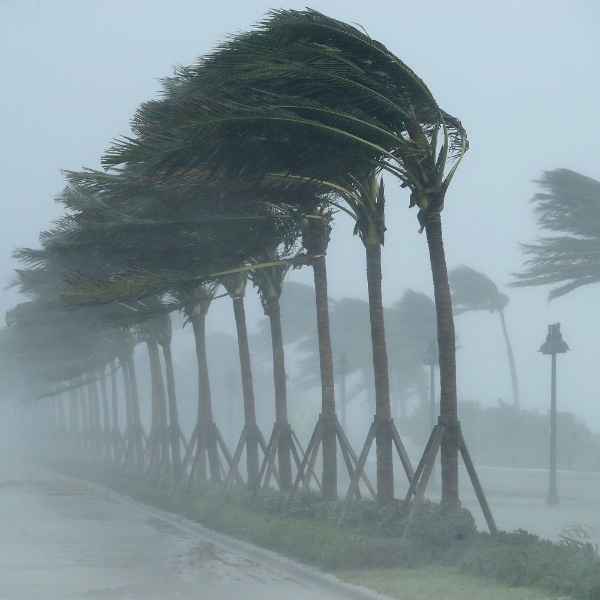
We will now consider preparing for a hurricane as the hurricane’s arrival draws near, swift and decisive actions are essential to your safety. Here’s what you need to do in the days leading up to the storm:
1. Secure Outdoor Items
The potential for strong winds turning everyday objects into dangerous projectiles is a real concern. Take the following precautions when preparing for a hurricane:
- Bring inside or securely fasten any items in your yard that could become projectiles in strong winds. Lawn furniture, garden tools, and loose debris should all be safely stowed away.
2. Fortify Your Home
Your home is your last line of defense. Ensure its resilience by taking these vital steps:
- Close and board up all windows and doors with ⅝” marine plywood if you lack hurricane shutters. This measure helps safeguard your home from the hurricane’s relentless forces.
- Prevent water damage by clearing rain gutters and downspouts. Trim trees and shrubs near your home to minimize the risk of branches or debris causing structural damage.
3. Prepare Your Refrigerator and Vehicle
In the face of power outages, it’s essential to make the most of the resources you have. Follow these guidelines:
- Adjust your refrigerator to the coldest setting to prolong the freshness of perishable items. Fill your freezer with water bottles and frozen items. The ice formation will act as an insulator, preserving the cold temperature for longer periods.
- Ready your vehicle for potential evacuations. Ensure it’s fueled up and stocked with essentials, including snacks, bottled water, a comprehensive first-aid kit, flashlights, flares, jumper cables, a warm wool blanket, and a change of clothes. These provisions are crucial if you need to leave your home quickly or navigate post-storm challenges.
4. Establish Your Evacuation Plans
Your safety is paramount. Plan accordingly, especially if you live in areas prone to flooding or high-rise buildings. Here are some key considerations:
- If you reside on the first or second floor of a high-rise building, establish a refuge plan with neighbors on higher floors. Seek their shelter and support in case of rising waters.
- Mobile home residents should not take any chances. Seek alternative shelter in a sturdy structure, as mobile homes are particularly vulnerable to hurricane winds.
- For residents in flood-prone areas, prompt evacuation is the safest course of action. Don’t delay; evacuate as soon as possible to ensure your well-being.
By diligently following these steps as the hurricane approaches, you’re taking proactive measures to protect yourself, your loved ones, and your property. As the storm draws near, it’s crucial to remain vigilant and responsive to any changes in its trajectory or intensity. Now, let’s explore the critical actions to take when the hurricane makes landfall and during its aftermath—the path to safety, recovery, and restoration.
In the Final Moments Before the Hurricane Strikes
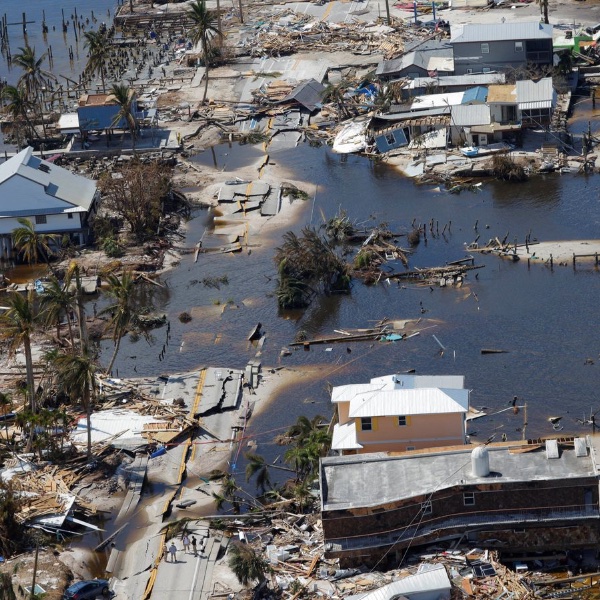
When preparing for a hurricane you certainly need to consider last minute preparations, As your preparations enter their final phase it is worth keeping in mind this could well be your final chance. These last-minute actions are crucial for your safety and comfort:
1. Additional Preparations
In these critical moments, take the following steps to fortify your readiness:
- Fill your bathtub with water, a prudent measure, especially if you have a WaterBOB. This reserve ensures you have a source of clean water for various needs throughout the storm’s duration.
- Prioritize electrical safety by turning off and unplugging sensitive electronic devices. Additionally, switch off the main power breakers to prevent potential electrical hazards during power surges.
- In the interest of safety, turn off propane tanks and gas lines. This reduces the risk of gas leaks and potential fires in the event of damage to gas infrastructure.
2. Stay Informed and Heed Local Authorities
Knowledge is your greatest asset in the face of a hurricane. Stay connected to the latest developments and adhere to guidance from local authorities:
- Maintain a NOAA radio within reach. These specialized radios provide real-time weather updates and emergency information, helping you stay informed even if power and internet services are disrupted.
- Follow directives and guidelines issued by local authorities. Their insights are invaluable for making informed decisions that prioritize your safety. If authorities recommend evacuation, don’t hesitate. Grab your “go bag” and leave immediately. Road conditions may deteriorate rapidly, and power outages could leave you stranded for days.
These final preparations and actions are your lifeline in the moments leading up to the hurricane’s landfall. With each measure you take, you enhance your ability to weather the storm safely and confidently. As the hurricane approaches and unleashes its force, it’s vital to stay vigilant and agile in responding to evolving conditions. Now, let’s navigate the challenges posed by the hurricane as it makes its presence felt, exploring the critical actions to take during the storm itself—the path to resilience in the face of nature’s fury.
During the Hurricane: Navigating Nature’s Fury
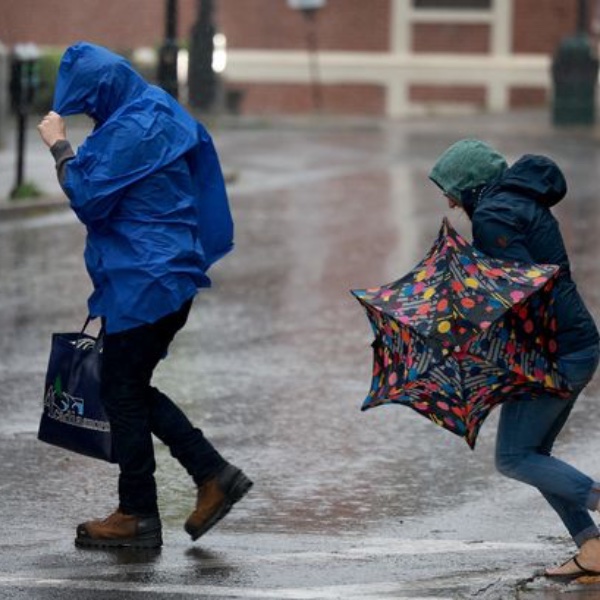
If you are preparing for a hurricane it is equally important to consider when the hurricane rages at its peak, your actions are paramount to your safety. Follow these essential guidelines to stay secure during the storm:
1. Stay Clear of Windows
The storm’s tempestuous winds can transform everyday objects into hazardous projectiles. To protect yourself and your loved ones, steer clear of windows and glass doors. Staying away from these vulnerable areas minimizes the risk of injury from flying debris.
2. Seek Shelter Within Your Home
As the hurricane’s intensity escalates, seek refuge within your home. Head to the lowest level and occupy an interior room, a safe room, or even a closet—any space that offers protection from the elements. Ensure you have your NOAA radio on hand to stay informed about the hurricane’s progress and any vital updates.
3. Shield Your Head
Safety within your shelter is paramount. Be prepared by having a mattress or pillow at the ready to shield your head from potential impacts. This simple precaution can provide critical protection in the event of debris or structural damage.
4. Await Official Instructions
During the hurricane’s fury, patience and vigilance are your allies. Do not venture outside or leave your safe location until local officials declare it safe to do so. Their guidance is grounded in the latest information, ensuring your actions align with the evolving conditions.
- In the event of flooding, act swiftly to move to higher ground. Never attempt to drive or walk through floodwaters, as they can conceal dangerous hazards and swift currents.
By adhering to these guidelines during the hurricane’s onslaught, you maximize your safety and the safety of those around you. Your preparedness and vigilance are your best defenses against the formidable forces of nature. Now, let’s explore the crucial actions to take in the hurricane’s aftermath—the path to recovery, restoration, and resilience.
After the Hurricane: Navigating the Road to Recovery
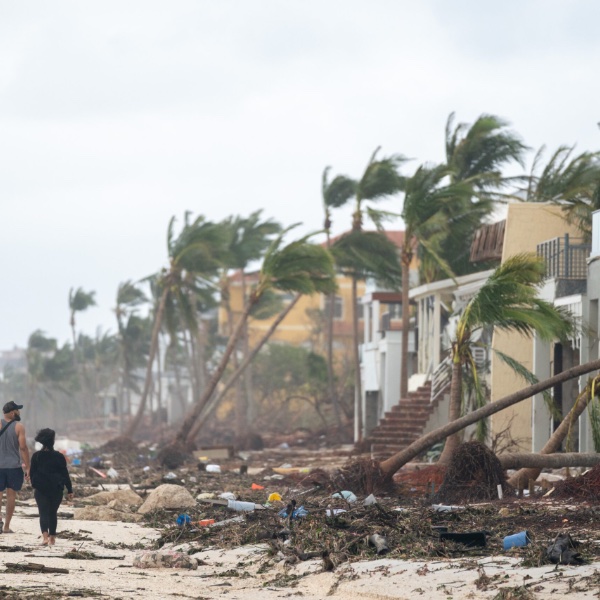
It is not just preparing for a hurricane that is important. You will be well advised to consider your plans after the storm. As the hurricane retreats, a new set of challenges and precautions emerges. These post-hurricane actions are critical for your safety and well-being:
1. Prioritize Electrical Safety
In the aftermath of the storm, electricity may be unreliable or disrupted. Follow these guidelines:
- If you’ve lost electricity, keep circuit breakers off until power is fully restored. This practice prevents potential hazards associated with power surges.
- Before restoring power, carefully inspect your home for any signs of frayed wires or electrical damage. Address any issues promptly, ensuring the safety of your electrical system.
2. Steer Clear of Flooded Areas
Floodwaters can pose significant dangers even after the hurricane has passed. Exercise extreme caution:
- Do not enter your home if floodwaters are still present. Flooded areas may conceal hidden hazards, such as submerged obstacles or electrical currents.
3. Be Wary of Hazards and Structural Damage
Post-hurricane conditions can be treacherous. Take the following precautions when preparing for a hurricane aftermath:
- If you encounter downed power lines, signs of structural damage, or gas odors, do not enter your home without professional inspection. These situations often require the expertise of structural engineers or utility professionals. Many injuries occur during the cleanup phase, so prioritize safety above all else.
4. Avoid Floodwaters
Floodwaters are potential reservoirs of peril. Do not wade into them:
- Floodwaters may contain dangerous debris, including sharp objects, broken glass, metal, sewage, gasoline, oil, and downed power lines. Avoid direct contact with floodwaters, even if they appear calm on the surface.
5. Exercise Caution with Water and Food
Maintaining safe hydration and nourishment is paramount in the hurricane’s aftermath. Follow these guidelines:
- Do not drink tap water unless local authorities declare it safe. Use a water filter and consider boiling water if you’re uncertain about its purity.
- Discard any food items that were not stored at the proper temperature or exposed to floodwaters. Consuming compromised food can lead to health risks.
6. Thoroughly Clean and Disinfect
Post-hurricane cleanup is essential, but it should be conducted with care:
- Clean and disinfect everything that came into contact with floodwater. Mud and residue left behind may contain sewage, bacteria, and chemicals. Proper cleaning and disinfection help prevent health risks associated with contamination.
By diligently following these post-hurricane precautions, you enhance your safety and well-being during the challenging phase of recovery. As you navigate the aftermath, remember that recovery is a gradual process, and it’s essential to prioritize safety at every step. Your resilience and preparedness are your greatest assets as you rebuild and restore normalcy to your life and community.
Conclusion: Preparing for a Hurricane Season with Resilience
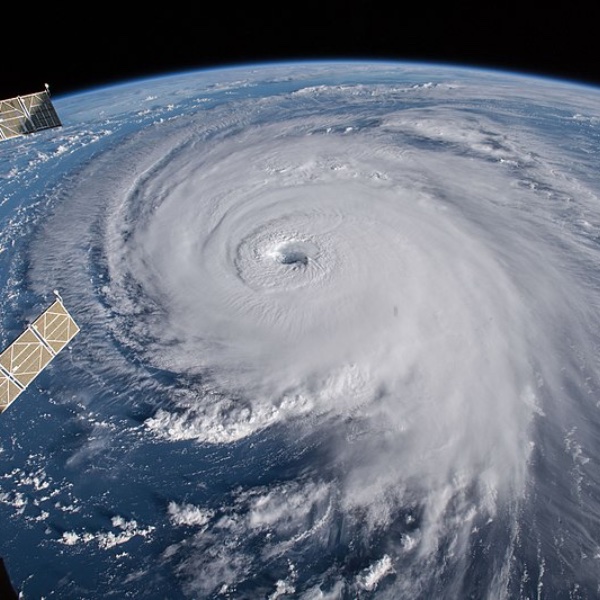
The Atlantic hurricane season, a force of nature’s fury, spans from June 1 to November 30, with its most menacing period unfolding between mid-August and late October. Preparedness is the key to safeguarding the well-being of your family in the face of these formidable storms. By embracing proactive measures and adhering to the guidelines outlined in this comprehensive guide, you can fortify your safety and resilience.
Preparing for a hurricane is a beacon of hope amidst the storm’s uncertainty. It not only ensures your family’s security but also empowers you to assist others in need. We encourage you to share this comprehensive guide on social media, extending the reach of knowledge and safety during hurricane season.
Always remember when preparing for a hurricane that safety comes first. Stay vigilant, stay prepared, and stay safe. In the face of adversity, your resilience shines as a testament to the strength of the human spirit. Together, we navigate the challenges of the hurricane season, emerging stronger and more resilient with each passing storm.
Hopefully this article has helped you preparing for a hurricane.
Take a look at more disaster preparedness stuff here.
